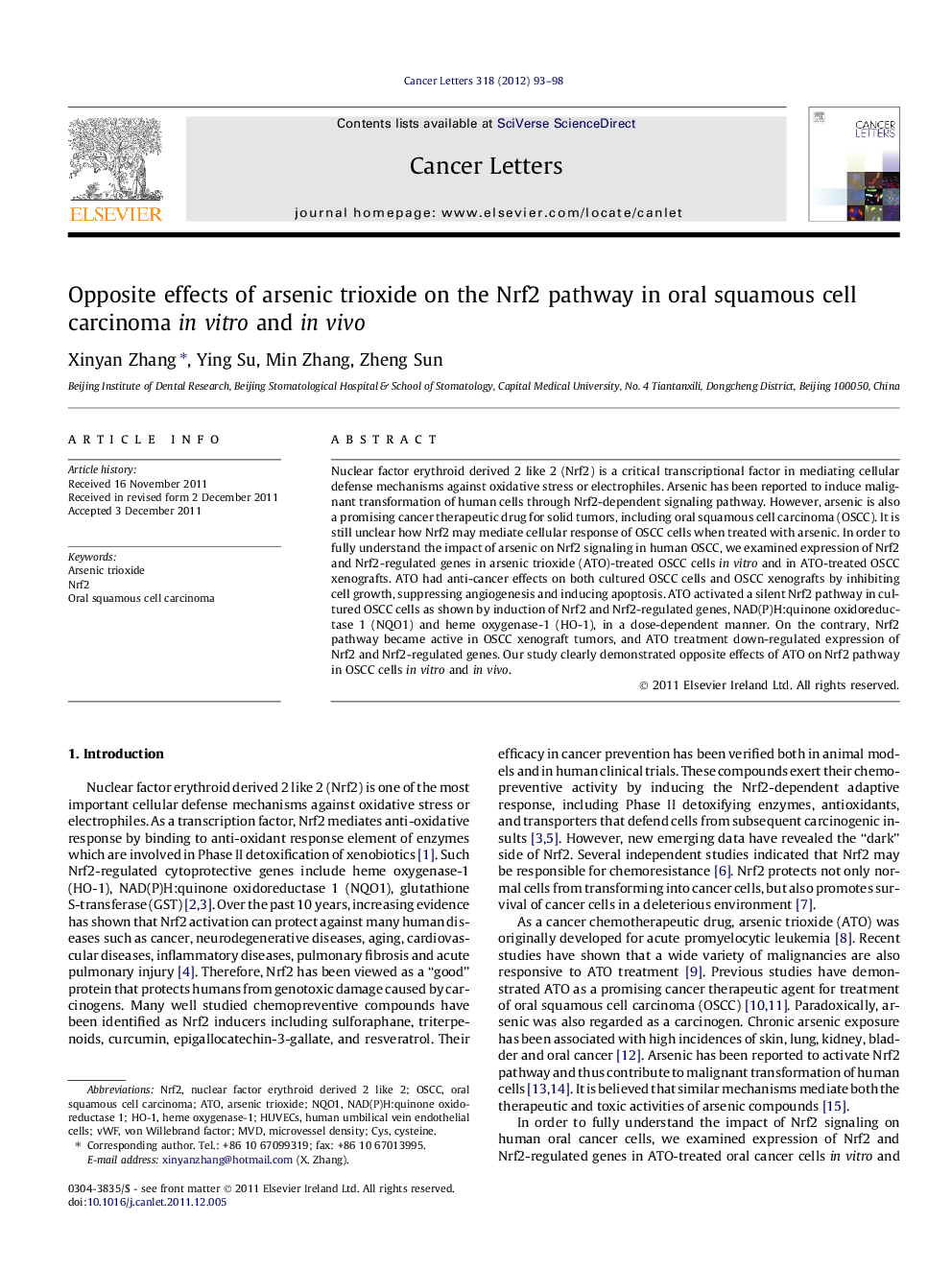| Article ID | Journal | Published Year | Pages | File Type |
|---|---|---|---|---|
| 2113456 | Cancer Letters | 2012 | 6 Pages |
Nuclear factor erythroid derived 2 like 2 (Nrf2) is a critical transcriptional factor in mediating cellular defense mechanisms against oxidative stress or electrophiles. Arsenic has been reported to induce malignant transformation of human cells through Nrf2-dependent signaling pathway. However, arsenic is also a promising cancer therapeutic drug for solid tumors, including oral squamous cell carcinoma (OSCC). It is still unclear how Nrf2 may mediate cellular response of OSCC cells when treated with arsenic. In order to fully understand the impact of arsenic on Nrf2 signaling in human OSCC, we examined expression of Nrf2 and Nrf2-regulated genes in arsenic trioxide (ATO)-treated OSCC cells in vitro and in ATO-treated OSCC xenografts. ATO had anti-cancer effects on both cultured OSCC cells and OSCC xenografts by inhibiting cell growth, suppressing angiogenesis and inducing apoptosis. ATO activated a silent Nrf2 pathway in cultured OSCC cells as shown by induction of Nrf2 and Nrf2-regulated genes, NAD(P)H:quinone oxidoreductase 1 (NQO1) and heme oxygenase-1 (HO-1), in a dose-dependent manner. On the contrary, Nrf2 pathway became active in OSCC xenograft tumors, and ATO treatment down-regulated expression of Nrf2 and Nrf2-regulated genes. Our study clearly demonstrated opposite effects of ATO on Nrf2 pathway in OSCC cells in vitro and in vivo.
